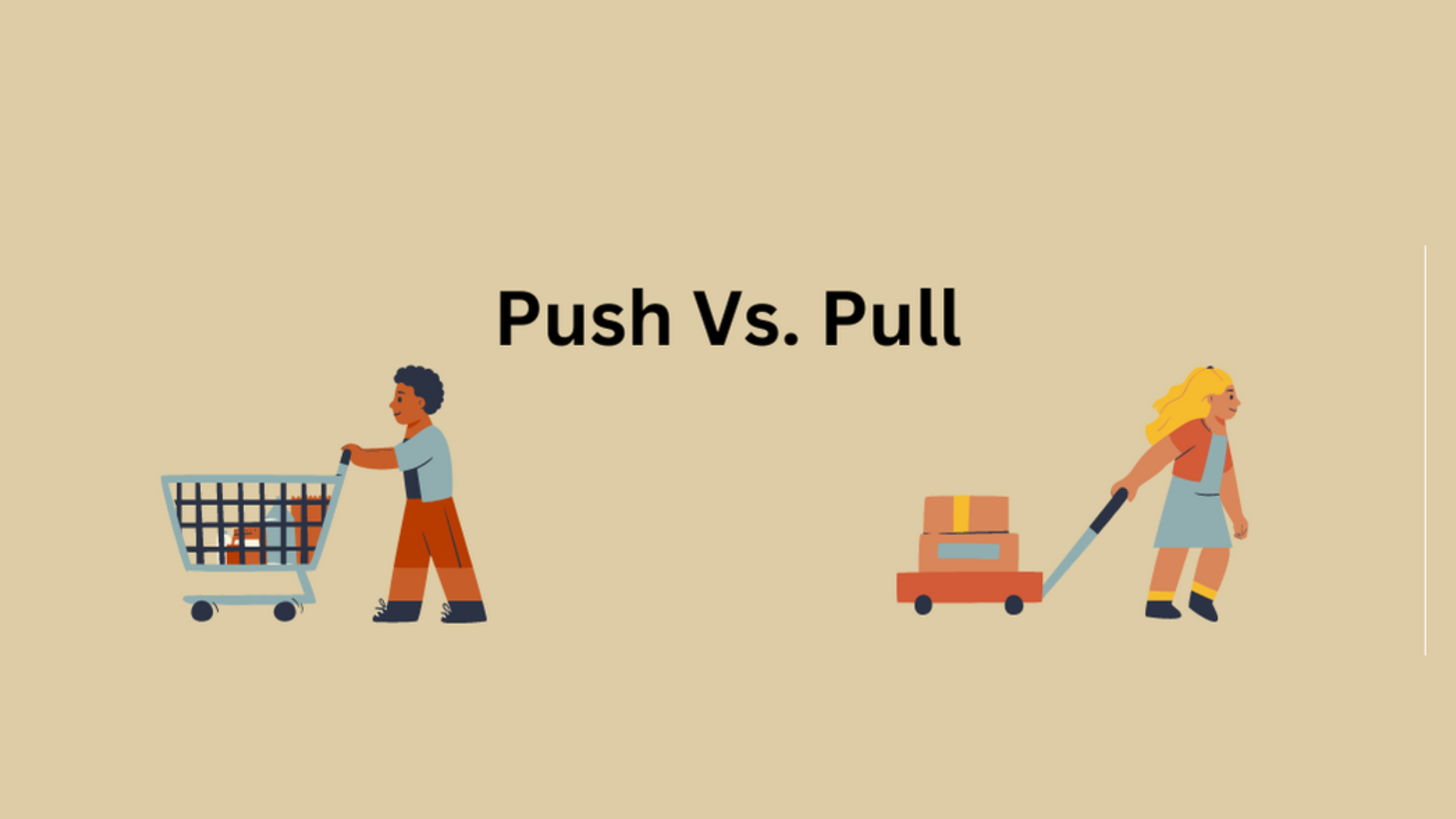the debate between push and pull systems is a central discussion for anyone involved in production planning and supply chain management. Both approaches offer distinct advantages and challenges, and the choice between them can significantly impact a company’s efficiency, responsiveness, and bottom line. But is there a definitive answer as to which is better? Let’s delve into the nuances of push and pull manufacturing to explore this question.
Understanding Push Manufacturing
What is Push Manufacturing?
Push manufacturing operates on a forecast-driven approach. This means that production schedules are determined based on estimated future demand. Goods are produced in anticipation of customer orders and then pushed through the supply chain.
Key Characteristics:
- Forecast-Driven Production: Companies rely on historical data and market analysis to predict future demand.
- Inventory Management: Typically, push systems maintain higher levels of inventory to meet anticipated demand.
- Batch Production: Often involves producing goods in large batches to achieve economies of scale.
- Less Flexible: Changes in demand can lead to excess inventory or stockouts if forecasts are inaccurate.
Advantages of Push Manufacturing:
- Economies of Scale: Producing large quantities can lower per-unit costs.
- Stable Production Schedules: Predictable production schedules can improve labor and resource planning.
- Buffer Against Demand Fluctuations: High inventory levels can protect against unexpected spikes in demand.
Disadvantages of Push Manufacturing:
- Inventory Costs: Maintaining high levels of inventory can be costly.
- Risk of Obsolescence: Excess inventory may become obsolete if demand shifts.
- Inflexibility: Difficulty in adapting quickly to changes in market demand.
Understanding Pull Manufacturing
What is Pull Manufacturing?
Pull manufacturing, on the other hand, is a demand-driven approach. Production is initiated only in response to actual customer orders. This means goods are “pulled” through the supply chain as needed.
Key Characteristics:
- Demand-Driven Production: Items are produced only when there is a confirmed order.
- Just-in-Time (JIT) Inventory: Minimizes inventory levels by producing only what is needed, when it is needed.
- Flexibility: Can quickly adapt to changes in customer demand.
- Lean Processes: Focuses on reducing waste and improving efficiency.
Advantages of Pull Manufacturing:
- Reduced Inventory Costs: Lower inventory levels mean lower storage and holding costs.
- Minimized Waste: Producing only what is needed reduces the risk of overproduction and obsolescence.
- Greater Responsiveness: Can adapt more rapidly to changes in customer demand and market conditions.
Disadvantages of Pull Manufacturing:
- Dependency on Supplier Reliability: Requires reliable suppliers to ensure timely delivery of materials.
- Potential for Stockouts: Lower inventory levels can lead to stockouts if demand suddenly increases.
- Complex Coordination: Requires precise coordination and communication throughout the supply chain.
Push vs. Pull: The Balancing Act
When to Use Push Manufacturing:
Push systems can be advantageous in industries where demand is relatively stable and predictable. For example, in the automotive industry, where production volumes are high and market demand can be forecasted with some accuracy, push manufacturing allows companies to achieve cost efficiencies through large-scale production and inventory management.
When to Use Pull Manufacturing:
Pull systems shine in environments where demand is highly variable or customization is key. For instance, in the tech industry, where products often have short life cycles and customer preferences can change rapidly, pull manufacturing helps companies stay agile and responsive to market shifts, avoiding the pitfalls of overproduction.
Hybrid Approaches:
Many companies find that a hybrid approach, incorporating elements of both push and pull systems, can offer the best of both worlds. For example, a company might use a push strategy for its core, high-volume products to achieve economies of scale, while employing a pull approach for custom or low-volume items to remain responsive to specific customer needs.
The Strategic Decision: Choosing the Right System
Factors to Consider:
- Nature of Demand: Is your demand stable and predictable, or variable and uncertain?
- Product Characteristics: Are your products standardized and high-volume, or customized and low-volume?
- Inventory Costs: How significant are inventory holding costs in your overall cost structure?
- Supply Chain Complexity: How complex and reliable is your supply chain?
- Market Dynamics: How quickly does your market change, and how critical is it to respond to these changes?
The Bottom Line:
There is no one-size-fits-all answer to whether push or pull manufacturing is superior. The right approach depends on a company’s specific operational context, market environment, and strategic goals. By understanding the advantages and challenges of both systems, businesses can tailor their production strategies to align with their unique needs and competitive landscape.
Conclusion
The debate between push and pull manufacturing is not about finding a universally correct answer but rather about identifying the best fit for a given situation. As markets evolve and technology advances, companies must remain agile and open to adjusting their strategies to meet the changing demands of their customers and the broader market environment. Whether you lean towards a push, pull, or hybrid system, the key is to continually assess and adapt your approach to stay competitive and efficient.
What’s Your Experience?
Have you implemented push or pull systems in your operations? How have they worked for you? Share your thoughts and experiences in the comments below!









